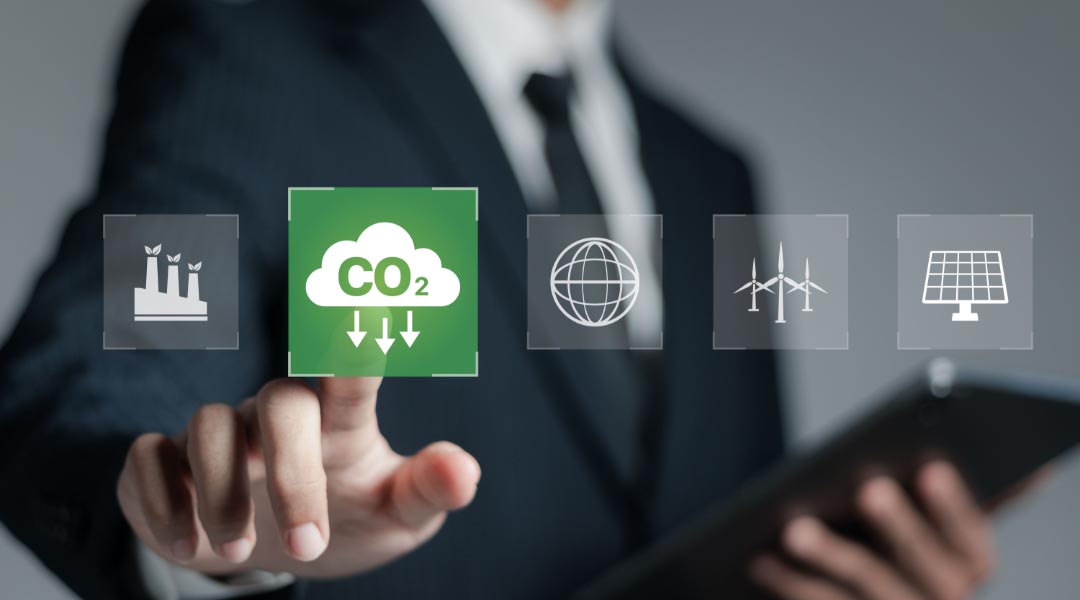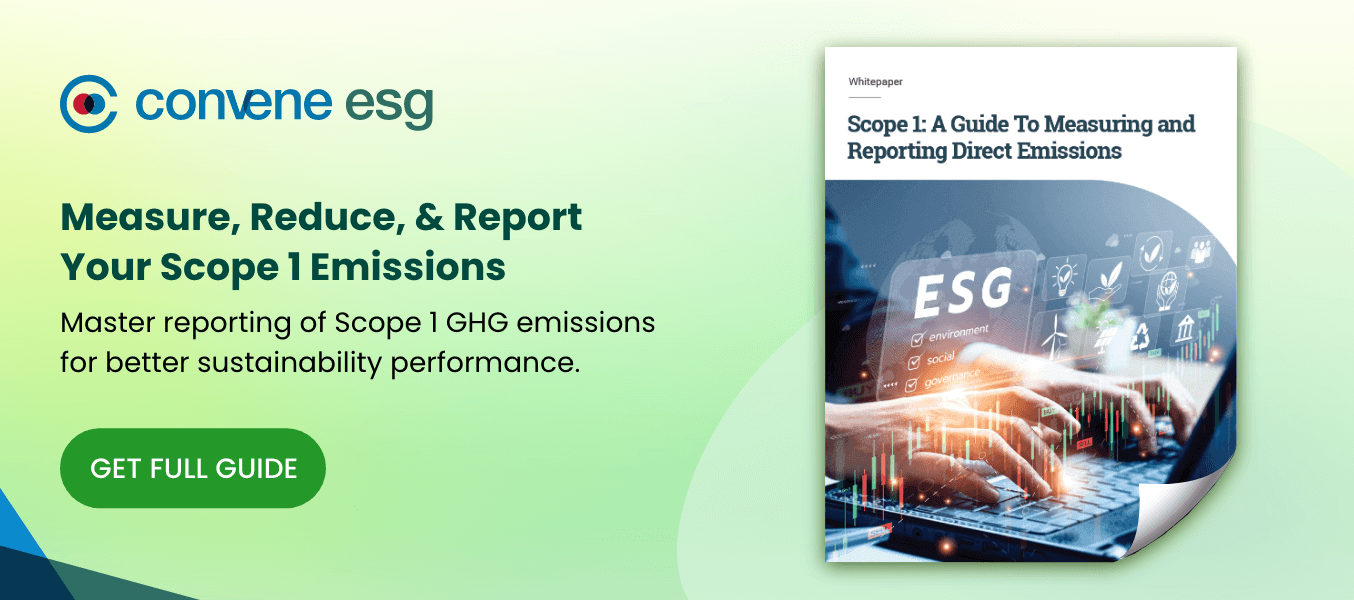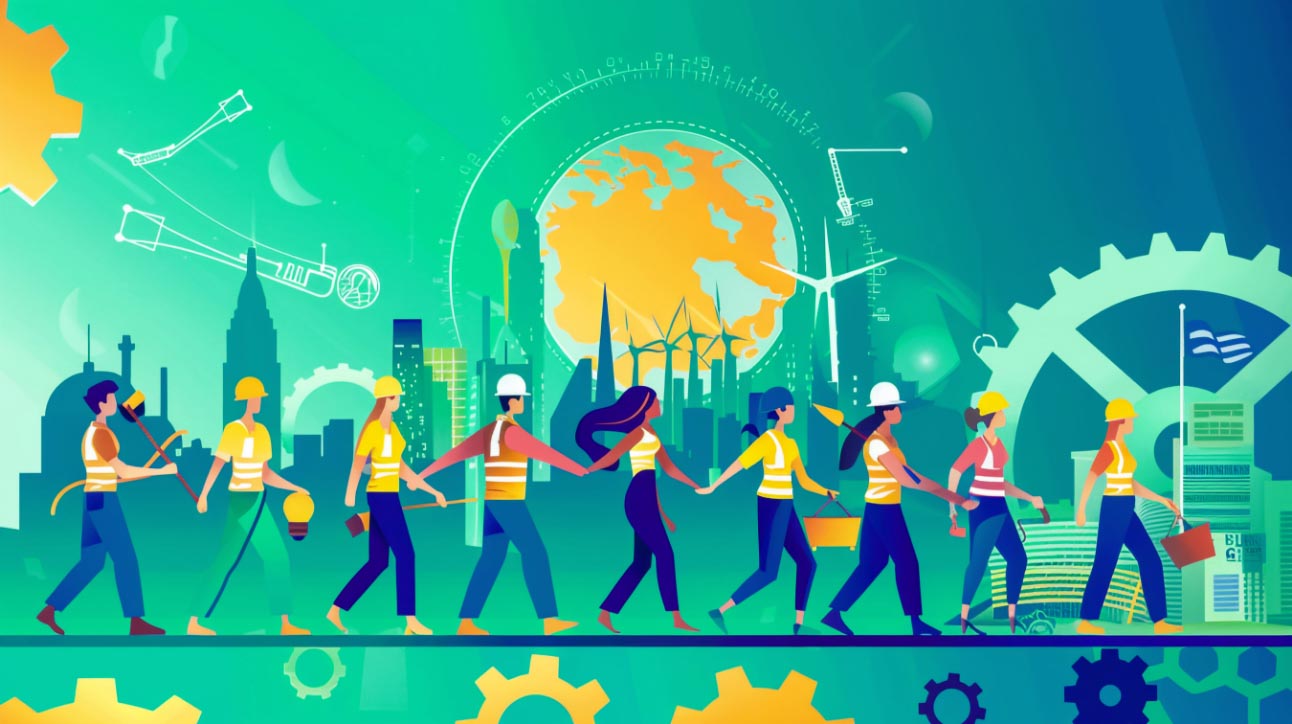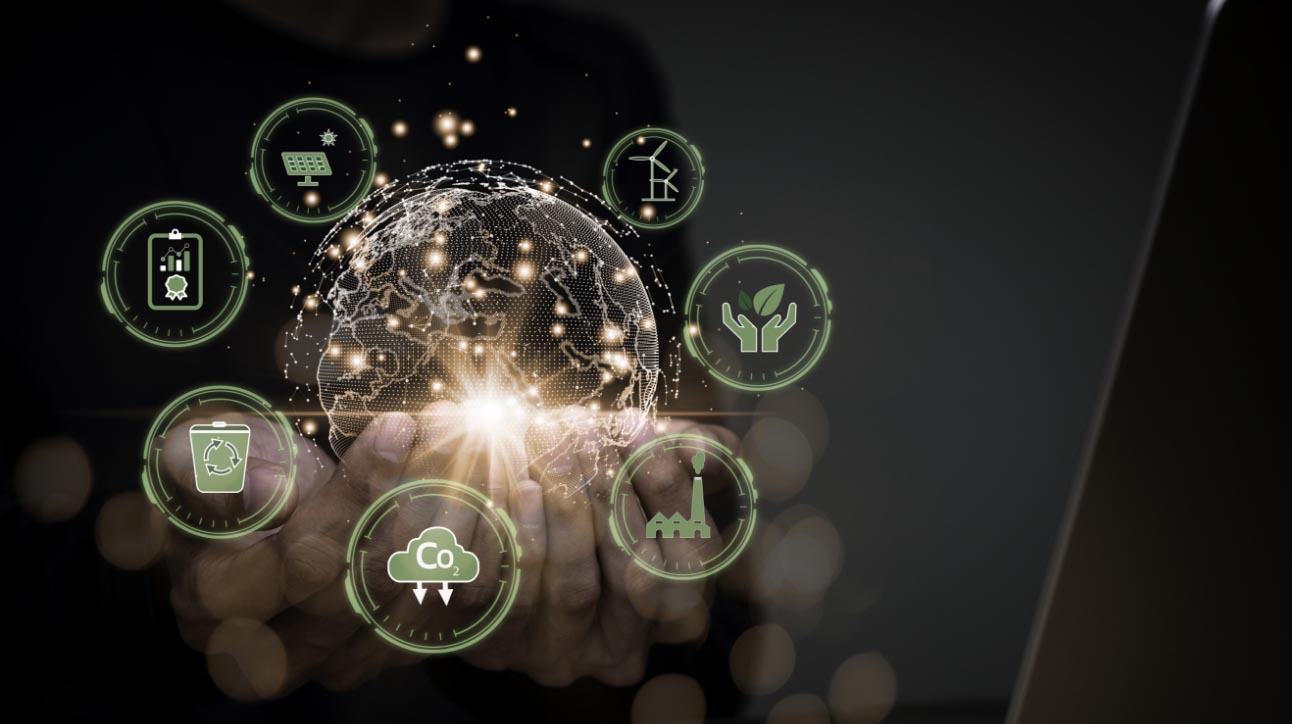You’ve probably noticed a rise in sustainable product ideas and eco-friendly innovations coming up recently. More people are switching to electric-everything, installing solar panels at home, and using recycled materials for high-end products and packaging. It’s all getting more sophisticated and creative every day. So, what’s driving this change? And why does it matter so much now?
The answer is simple: we urgently need it. Beyond just being a trend, this is happening because we must avoid climate change’s worst consequences. While the topic sparks debates on a global scale, it also points us to one solution that companies are called to act on — decarbonisation.
What is Decarbonisation?
Decarbonisation refers to any effort with the ultimate goal of reducing our carbon footprint and greenhouse gas (GHG) emissions generated by a country, region, organisation, or individual. It combats climate change by moving away from carbon-heavy practices, improving energy efficiency, and adopting alternatives, such as renewable energy and zero-carbon technologies. Industries, spanning all sectors of the economy, must change how energy is produced, how goods are manufactured, and how land is managed. Alongside emission reduction, it also focuses on improving carbon capture methods, including forest conservation and soil carbon sequestration.
GHG emissions are the root cause of most of the effects of global warming and climate change. Hence, global decarbonisation is one of the most effective, achievable ways to meet the goal of the Paris Agreement, which aims to limit global warming to 1.5 °C. This requires decarbonised systems, cutting emissions by nearly half by 2030.
What is Comprehensive Decarbonisation?
Comprehensive decarbonisation takes a wide-ranging and permanent approach to drastic emissions reduction across all sectors. Unlike decarbonisation, in general, comprehensive decarbonisation addresses a focused scope of overall systemic changes in energy systems, supply chains, and climate solutions in every stage of production, consumption, and policy-making. It pushes for industry-wide transitions and transformations in all aspects of society.
The European Union’s Green Deal is a comprehensive decarbonisation plan that is committed to cutting greenhouse gas emissions by at least 55% from its 1990 levels by 2030 and achieving full climate neutrality by 2050. Backed by the legally binding Fit for 55 package, the EU has introduced key policies like expanding emissions trading to transport and buildings by 2027, setting a 42.5% renewable energy target by 2030, and creating an €86 billion Social Climate Fund to support citizens and small businesses in the overall green transition.
Why is Decarbonisation important?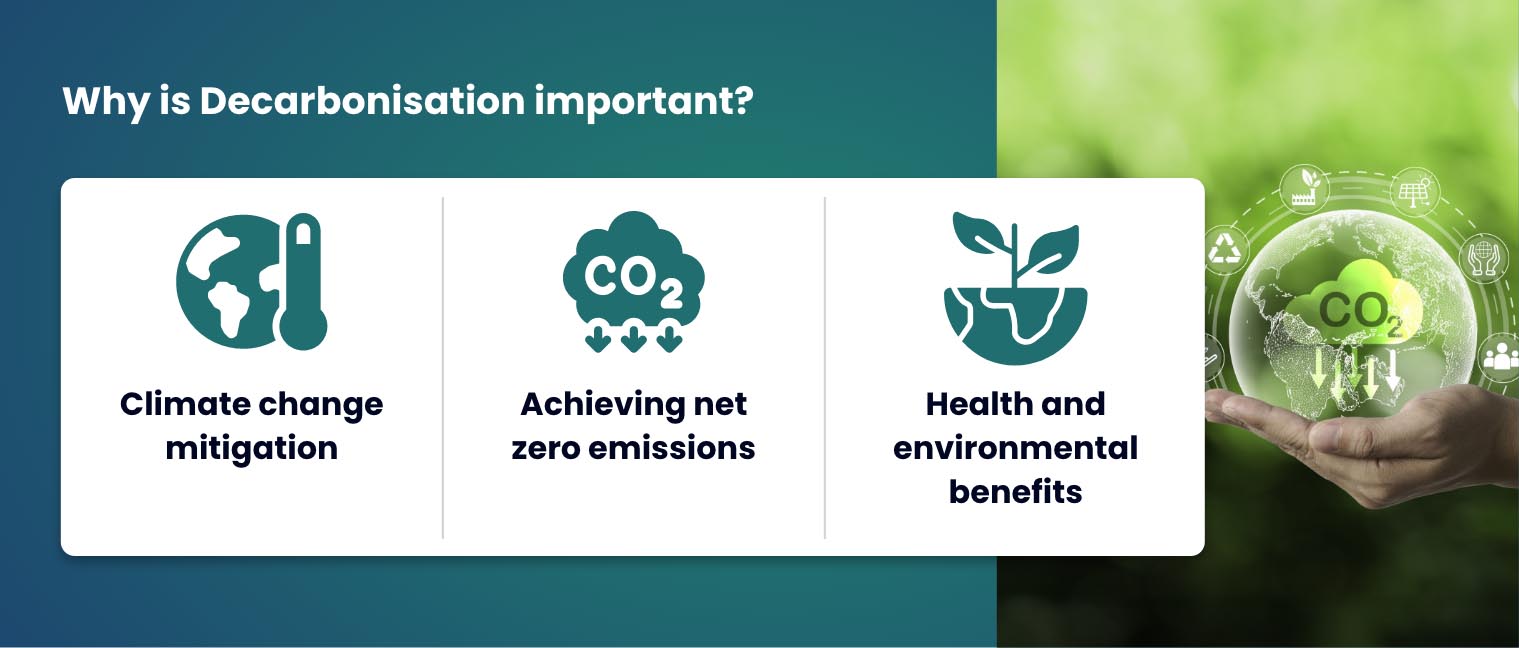
Decarbonised companies positively help in achieving global environmental stability and preventing the worst impacts of climate change. To keep global warming below 1.5°C, rapid global decarbonisation is urgently needed. Without reducing emissions, the planet will continue to warm, leading to a domino effect of environmental, economic, and social issues.
Here’s why decarbonisation is important:
- Climate change mitigation: Decarbonisation slows global temperature rise, curbing climate change catastrophes, affecting rising sea levels, extreme weather events, and deteriorating ecosystems.
- Achieving net zero emissions: To meet the 2050 net-zero target, significant reductions in fossil fuel use and a shift to renewable energy sources are necessary to stabilise the climate before it becomes irreversible.
- Health and environmental benefits: Cutting GHG emissions improves overall air quality, contributing to reduced health problems such as respiratory diseases. Sustainable agriculture and energy practices also protect biodiversity and ecosystems, maintaining life on Earth.
What role do companies play in global decarbonisation?
Companies are major contributors to GHG emissions. In fact, only 100 companies had been responsible for over 70% of GHG emissions since 1988, with just 25 companies contributing more than half of industrial emissions. This data was from 2017, about a year after the Paris Agreement was signed.
Asia Pacific is both the world’s fastest-growing economy and its biggest carbon emitter, responsible for nearly 50% of global CO₂ emissions in 2022. While the region did cut carbon intensity by 2.8%, that’s still far off the 17.2% annual drop needed to stay on track for the 1.5°C climate goal. This lines up with Carbon Majors’ latest report in 2024 that 87% of companies with post-Paris emissions growth are based in Asia, highlighting how economic expansion, energy insecurity, and inadequate clean energy investments are outpacing climate action. The rest included 70% in the Middle East, 75% in Australia, 60% in South America, 57% in Europe, while only 50% of companies saw emissions rise in Africa.
Achieving net-zero emissions by 2050 requires a comprehensive approach from businesses to decarbonise their operations. Key sectors like oil, gas, steel, and transportation are crucial in this effort, with some companies already shifting toward green investments. Despite these efforts, the pace and scale of responsible changes are not enough to meet climate goals, while many companies are still prioritising short-term profitability. With the impact companies can make with decarbonisation efforts, they are urged to reconsider fossil fuel investments to avoid financial and environmental risks in the long term.
Key Sectors to Decarbonise
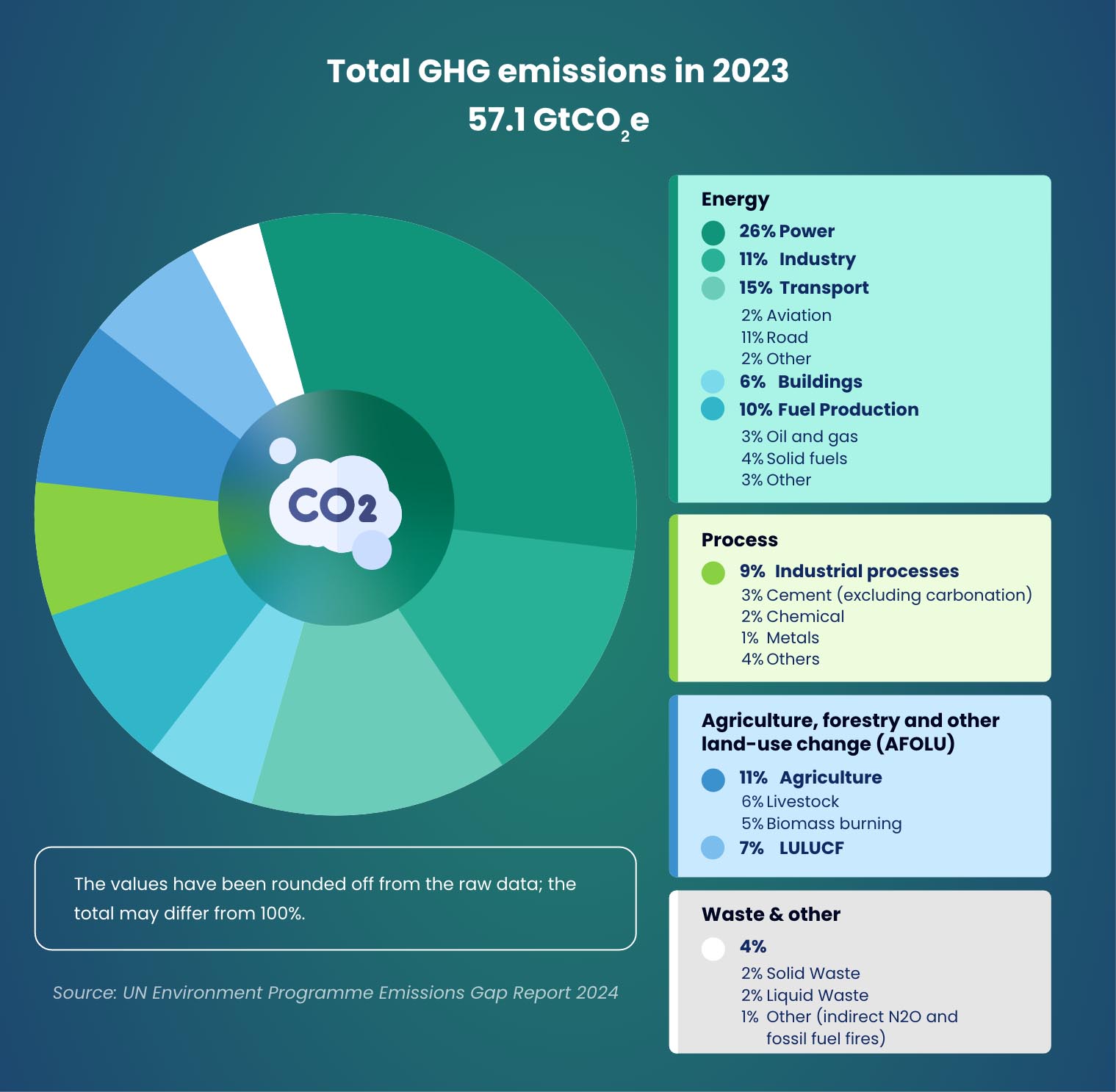
Many of the most carbon-heavy industrial and commercial sectors produce a wide array of essential modern technologies, commodities, and services. Bridging the emissions gap by 2030 and 2035 will require rapid, large-scale transformations across every major sector. In 2023, global greenhouse gas emissions reached a record high of 57.1 GtCO₂e, which stands for the climate impact of 57.1 billion tonnes of CO2 and all global greenhouse gases added up. It
marked a 1.3% rise from 2022, which is a faster growth rate than the pre-pandemic decade average. Here are a few of the most frequently discussed sectors in need of decarbonisation.
Power
The power sector remains central to global decarbonisation, yet progress remains insufficient to meet the 1.5°C climate goal. While some countries have made progress in scaling up solar and wind energy, overall emissions from electricity generation remain too high. Despite encouraging gains in solar and wind deployment in some countries, emissions from electricity generation are not falling fast enough. To align with global benchmarks, electricity from persisting coal and fossil gas consumption must fall by sevenfold for coal and tenfold for fossil gas by 2030. The affordable and widely available solar and wind represent the largest share of emission reduction potential, contributing 27% by 2030 and increasing to 38% by 2035. Achieving this will depend heavily on upgrading power grids, expanding energy storage, and accelerating the integration of renewables into energy systems.
Industry
Industrial emissions represent one of the largest mitigation opportunities, but also face the longest timelines for change. Emission reductions in this sector are constrained by long facility lifespans and capital-intensive planning, often taking 5–10 years to build or upgrade. Still, there is strong potential to cut emissions, particularly through energy efficiency, electrification, and switching to low-carbon fuels. These strategies will have a greater impact in 2035 as more clean technologies are introduced into operations. Nearly half of the emissions cuts in this sector could be made at low cost, with even more savings possible by improving production processes and using materials more efficiently.
Fuel Production
Despite public climate pledges, members of the Oil & Gas Decarbonisation Charter approved 68 new fossil fuel projects in 2024. This unlocks 14 billion barrels of new reserves, committing nearly $250 billion. Actions like this can cause nearly 5 billion tonnes of CO₂, matching U.S. annual emissions. This expansion contradicts the International Energy Agency’s 1.5°C pathway, which requires a 20% production cut by 2030, not the projected 17% increase by Charter signatories. As civil society groups warned, the Charter is “a dangerous distraction” from real decarbonisation strategies.
Transportation
Transport emissions in Asia and the Pacific saw a sharp 6.6% increase in a year in 2023, marking the largest growth in any sector or region. These emissions now make up 12% of the region’s total and 40% of the world’s transport emissions. While steps have been taken to promote electric vehicles and reduce fossil fuel subsidies, the region still sees challenges in inadequate infrastructure and slow adoption of renewable energy. To push decarbonisation efforts, they need to establish more extensive emission reduction goals, expand public transit infrastructure, encourage electric vehicles and cycling, and improve the efficiency of transportation networks.
Agriculture
Agriculture, which uses 70% of freshwater and 38% of land, is a major contributor to climate change and yet a critical part of the solution. Cutting food waste by 23%, shifting to lower-emission diets, and restoring forests could collectively reduce up to 6.7 gigatons of CO₂ annually by 2050. McKinsey introduced 28 practices that could cut another 2.2 gigatons per year, adopting changes on how people farm, including management of heat stress, reducing fertiliser overapplication, and utilising hydrogen power for on-farm machinery.
Building
The sector is responsible for 37% of global carbon emissions, largely from its reliance on high-emitting materials like steel and cement. Transitioning this sector to greener practices could open up $1.8 trillion in global market opportunities while delivering major environmental and social benefits, from energy savings to healthier living spaces. Effective decarbonisation will require coordinated investment in green technologies and the circular economy, and improved operational and material standards.
Other Sectors
Land use, land use change, and forestry (LULUCF), industrial process, waste, and other sectors can also benefit a wide range of additional economic sectors. These industries are investigating more sustainable decarbonisation technology and processes to help organisations in these fields achieve their emissions targets.
Examples of Decarbonisation Strategies
Decarbonisation looks different for every industry, but many businesses are already putting climate action into practice. Here are decarbonisation examples of real-world strategies companies are using to cut emissions:
- Renewable Energy: Companies are adopting renewable energy technologies like solar, wind, and green hydrogen to invest in electrification and reduce their reliance on fossil fuels. There have been innovations such as floating wind farms that deploy turbines in deep ocean waters and green hydrogen production that break down water molecules to produce power and electricity.
- Circular Economy: Designing products to be reused, repaired, and recycled reduces waste in the production processes and conserves resources. Samsung’s upcycling program, which turns old smartphones into smart home devices, is a notable example. Green cement plants that capture carbon dioxide emissions contribute to sustainable building materials while reducing emissions.
- Sustainable Resources: Companies are responsibly sourcing and using natural resources with smart irrigation systems, sustainable packaging, and eco-friendly pesticides. Coca-Cola’s “World Without Waste” initiative focuses on recyclable packaging, while advanced water treatment solutions improve the efficiency of water purification.
- Carbon Offsetting: Funding certified reforestation, forest conservation, renewable energy, and methane collection projects can offset residual emissions. Companies use this investment strategy to compensate for the emissions they cannot eliminate yet in their operations.
How to Achieve Decarbonisation Goals
The decarbonisation process varies according to the sector in which an organisation operates, its size, and its jurisdiction. Most decarbonisation strategies consist of these fundamental steps:
Measure your carbon footprint
Begin by establishing a baseline for your carbon emissions by assessing your organisation’s total carbon footprint, including direct and indirect sources. Carbon footprint calculators offer a cost-effective, reliable solution for estimating your company’s total scope 1, 2, and 3 emissions. With this data, you can identify key areas of improvement and guarantee accurate sustainability assessment and documentation.
Identify goals and indicators
Estimates of an organisation’s total carbon output can be used to set achievable decarbonisation goals with built-in targets to monitor progress along the way. Several options include applying sustainability and ESG goals and principles, and choosing science-based targets for the latest climate science.
- Small organisations may choose more accessible targets, such as installing LED lights in all owned or managed facilities, expanding company-wide recycling policies, encouraging employees to utilise mass transit, or investing in low-emission vehicles and equipment.
- Large enterprises can practice circular economy, invest in carbon offsetting and trading projects, and upgrade to energy-efficient machinery.
Engage stakeholders
Much of the actual work of reducing emissions occurs during day-to-day operations, which is why it’s critical to engage employees from the earliest stages of a strategy. Schedule training and provide resources to help your team understand important concepts and why they matter, such as “carbon neutrality,” “net zero,” and “carbon offsetting.” The best way to engage stakeholders in your plans is to invite feedback on the effectiveness of existing goals and suggestions for improvement. Encouraging partnered companies to adopt decarbonisation strategies of their own, if possible, also further reduces the carbon footprint impact on supply and value chains.
Adopt decarbonisation methods and sustainable technology
Incorporate industry-specific decarbonisation examples and practices within and outside your company. It can start with investing in sustainable energy sources such as solar, wind, and geothermal. It can also involve suppliers for sourcing sustainable materials and optimising logistics, helping to reduce Scope 3 emissions and integrating climate-friendly practices across the supply chain.
Communicate progress transparently
Finally, use tools such as ESG reporting software to track your progress toward achieving your decarbonisation goals. Doing so will give leaders up-to-date insights into how their plans are advancing as well as an early warning of any faults in their efforts. Furthermore, keeping track of carbon-reduction projects and similar programs will simplify the process of reporting on ESG performance.
Common Challenges of Decarbonisation
As industries work on reducing their carbon footprint, they face rising energy demands, financial barriers, and the complexity that comes with transforming supply chains and systems.
- Rising energy demand: In 2024, the global energy demand surged by nearly double its average growth rate, which was caused by growing global economies led by the power sector. Industrial activities, urbanisation, and higher use of digital technologies and cooling systems in warmer regions made electricity consumption rise by 4.3%. Although this ties with renewable energy topping the global demand growth at 38%, the rest are still covered by natural gas, coal, oil, and nuclear energy.
- Dependence on fossil fuels: Global demand for fossil fuels remains strong, with natural gas seeing the highest growth. This can be tied to its cost-saving competitiveness and availability. While renewable energy sources like solar and wind are growing, they still face challenges around efficiency and storage. And given the spike in electricity consumption, full reliance on renewables will make it difficult to achieve energy decarbonisation anytime soon.
- Policy and regulatory uncertainty: Policies and regulations around decarbonisation are evolving. The lack of clarity and unified commitment across nations [insert Future of ESG Reporting whitepaper] can make it difficult for businesses to plan and invest in the long term. However, this challenge is an opportunity for governments, industries, and innovators to come together. The current progress is already a strong indicator of what’s possible and what else can be done. As more industries, governments, and consumers align with sustainability goals, we get closer to a decarbonised future.
FAQs on Decarbonisation
1. What scope is the most difficult to decarbonise?
Scope 3 emissions, which cover the company’s entire supply chain, are often the hardest to address due to the indirect nature of these emissions. This may also be why the rigidity of disclosing the different scopes, especially between Scope 3 and the combined Scopes 1 and 2, varies in some global frameworks.
2. How fast should companies decarbonise?
Given the pace at which industries are acting, it is close to the point of no return in climate change and biodiversity loss. There is no other way to put this, but immediate action is needed to overhaul carbon-emitting practices and meet long-term goals such as achieving net zero by 2050.
3. What is the difference between absolute decarbonisation and intensity decarbonisation?
Absolute decarbonisation focuses on reducing total emissions, while intensity decarbonisation targets reducing emissions relative to specific metrics like production or revenue.
4. What are some organisations that focus on decarbonisation efforts?
Organisations like the Task Force on Climate-Related Financial Disclosures (TCFD) and the International Energy Agency (IEA) are working to promote decarbonisation initiatives across industries.
5. How does decarbonisation impact the economy?
Decarbonisation is reshaping the economy. By cutting emissions, companies reduce climate-related risks, such as infrastructure damage from extreme weather, and resources and supply chain disruptions. Consumers today are also going more for green and sustainable options. As more companies adopt socially and environmentally responsible practices, they are not only meeting this demand but also getting ahead of growing regulations around ESG reporting. The result? A decarbonised economy with stronger financial resilience for an evolving market.
Drive Decarbonisation Forward with Convene ESG
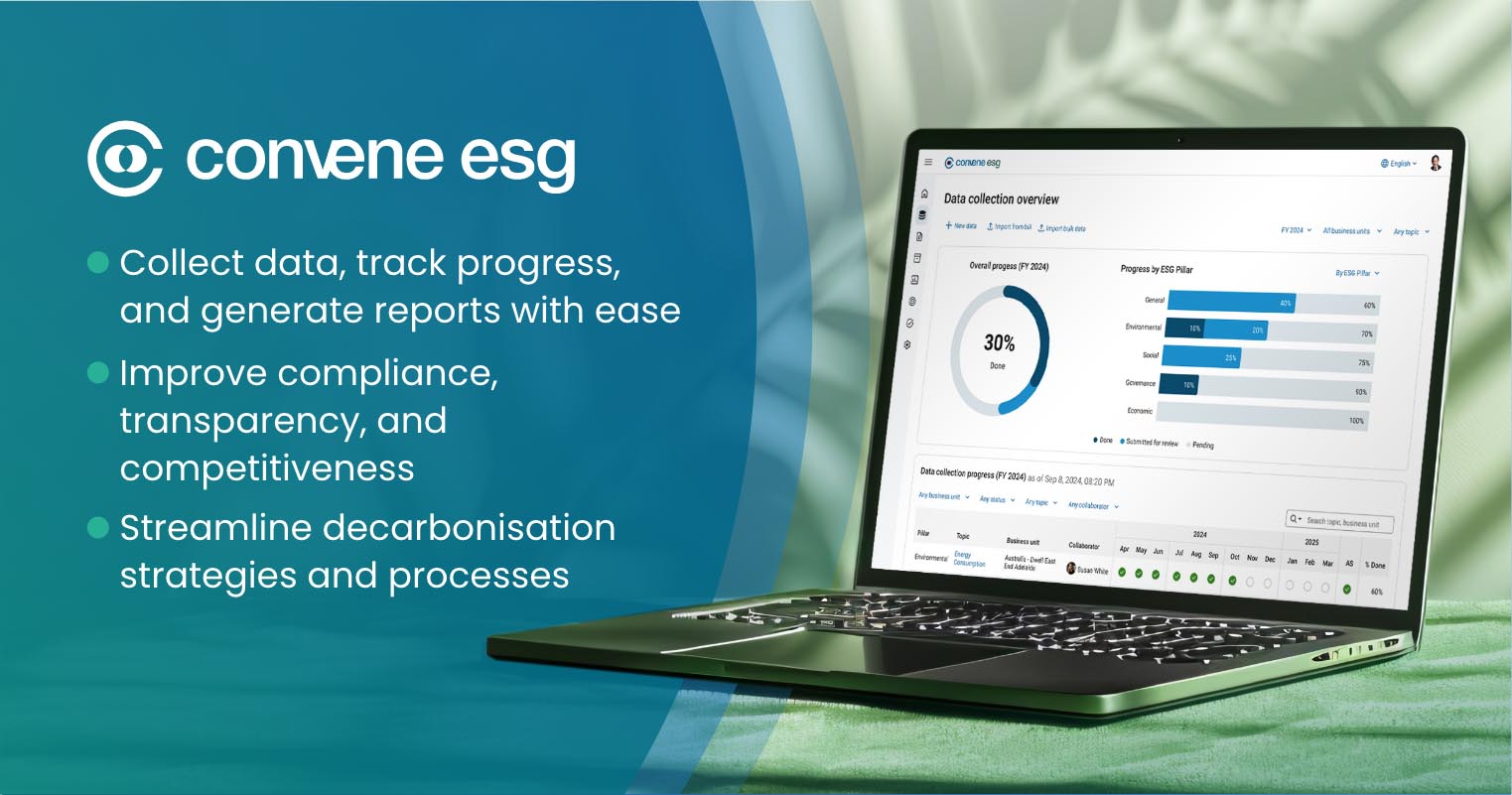
Achieving net zero requires a clear strategy, investment in efficient decarbonisation technology, transparent communication, and strong leadership. Businesses must act now to adopt innovative solutions, accurately track their progress through sustainability frameworks, and work toward a carbon-neutral future.
How do we do this? ESG reporting software is the perfect tool to simplify tracking, reporting, and managing carbon emissions in real-time. By aligning with global sustainability standards and local regulations, ESG software ensures your decarbonisation journey is not only compliant but also impacts your business and the planet for the long-term.
With Convene ESG, you can efficiently collect data, measure progress, craft reports, and optimise your entire data and decarbonisation process and strategy. Apart from environmental sustainability, it covers all other areas, such as social responsibility and ethical governance of companies, that can boost their competitive advantage. It accurately shows your performance and commitment, and understands the urgency of your sustainability and compliance needs.
Start today and see how Convene ESG can help drive both your environmental goals and business growth. Book a demo now!
Pat is a Content Writer, focusing on informative and purposeful content for Convene ESG. She has written for sustainable living and art exhibitions, and took part in research and communication projects linked to the UN's Sustainable Development Goals, further diving her into sustainability and ESG values. Outside of marketing and content, she explores new subjects in film, drawing, and occasional overthinking.
